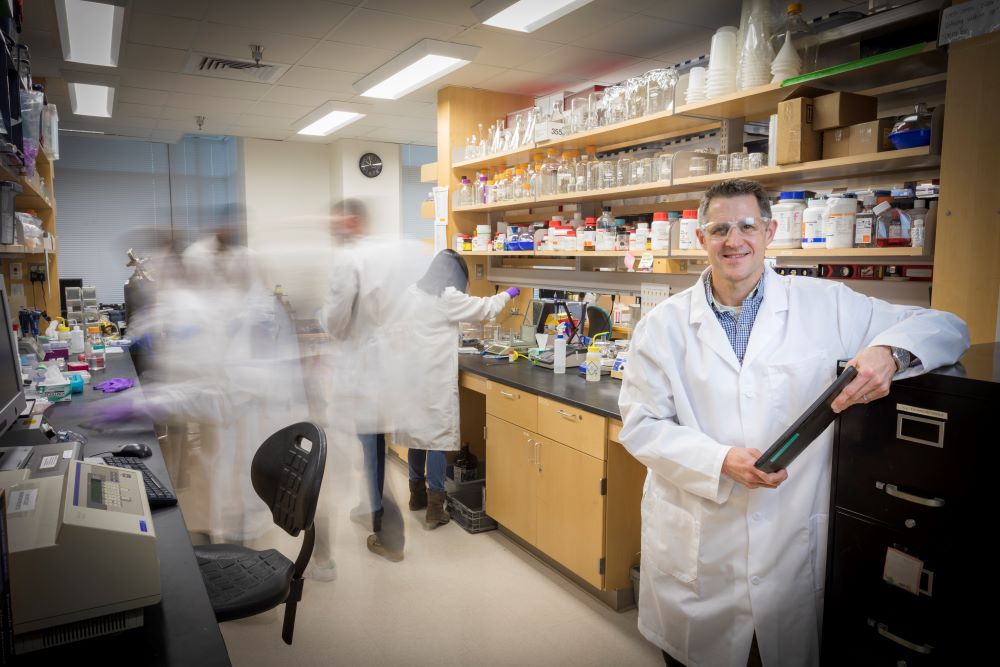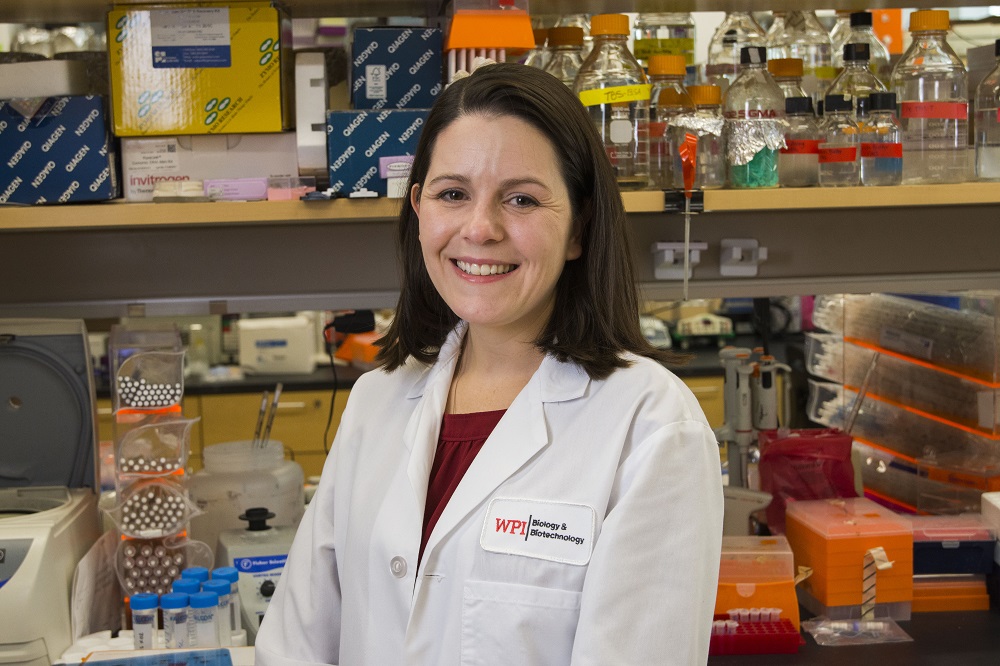
WORCESTER, Mass.– September 3, 2008 – A research team at Worcester Polytechnic Institute (WPI) has received a three-year, $900,000 award from the National Institutes of Health (NIH) for a project aimed at developing a novel way of transforming adult skin cells into stem-like cells. If successful, the research could result in a relatively simple and straightforward method for replacing tissue lost to injury, growing new organs, and curing degenerative diseases like diabetes and Parkinson’s.
The grant is one of only 38 awarded by the NIH through a new program called EUREKA (Exceptional, Unconventional Research Enabling Knowledge Acceleration), which was created to fund exceptionally innovative research projects that could have an extraordinarily significant impact on many areas of science. The grants will help investigators test novel, often unconventional hypotheses, or tackle major methodological or technical challenges.
"EUREKA projects promise remarkable outcomes that could revolutionize science," said NIH Director Elias A. Zerhouni, M.D. "The program reflects NIH’s commitment to supporting potentially transformative research, even if it carries a greater than usual degree of scientific risk."
"This outstanding award is indicative of the high quality of work underway at WPI in the life sciences" says John A. Orr, WPI’s provost and senior vice president. "It also reflects the value of the extraordinary investment the university has made in life sciences education and research, particularly through our development of Gateway Park and the 125,000-square-foot WPI Life Sciences and Bioengineering Center at Gateway Park. Our commitment to playing a vital role in the growth of the life sciences economy locally and regionally, as well as to promoting innovation and entrepreneurship in areas of national need, is bearing fruit."
The WPI research is an outgrowth of a two-year project funded by the Defense Advanced Research Projects Agency (DARPA), the first phase of a major effort aimed at finding ways to enable mammals—including humans—to regenerate tissue in digits and limbs lost to traumatic injury. This ability has been observed in amphibians, but not in higher animals.
Dr. Tanja Dominko, associate professor in WPI’s Department of Biology and Biotechnology and a member of the WPI Bioengineering Institute, is the principal investigator for the NIH-funded project. She also oversaw the work funded by DARPA as president of the Worcester biomedical company CellThera, which was a member of a multi-institution team led by researchers at Tulane University. In 2006, CellThera signed an agreement with WPI to pursue its portion of the DARPA work jointly with researchers at the university.
The goal of the first phase of the DARPA project was to induce the formation of blastema-like cells at an injury site in a mammal. A blastema is a ball of undifferentiated cells that in amphibians forms from cells that remain at the site of an amputation. It is capable of regrowing the missing limb by forming all of the required tissue types—skin, muscle, bone, connective, and nerve. Mammals cannot generate blastemas, but instead heal injuries by forming scar tissue.
In their portion of the DARPA project, the WPI/CellThera researchers attempted to activate genes within the mammalian genome that are characteristic of pluripotent cells—undifferentiated cells that can grow into multiple tissue types. Stem cells are examples of pluripotent cells. They were also able to induce human skin cells to become pluripotent, suggesting that humans may have the ability to form blastemas. To accomplish this, the team placed the cells in a lab dish and exposed them to an extract from the eggs of the African clawed frog (Xenopus laevis). In the past, this extract had been shown to activate at least one gene specific to stem cells.
In the NIH project, the team led by Dominko will extend the DARPA work by conducting a comprehensive study of the contents of the Xenopus extract, systematically searching for specific components—particularly proteins, RNAs, and micro-RNAs—that may be responsible for its ability to induce pluripotency in adult cells. They will test components by exposing adult skin cells to selected fractions of the extract and then looking for the genetic markers of pluripotency. Treated cells will also be tested for their ability to form all three of the germ layers that develop early in the formation of an embryo. The germ layers go on to form all of the many tissue types in the body. This is a commonly accepted test for pluripotency.
Dominko says the ultimate goal of the NIH project is to identify and characterize components of the Xenopus extract that can induce pluripotency in adult cells. "A fully differentiated adult cell, whether a muscle cell, a liver cell, or a neuron, retains its ‘memory’ of its embryonic state," she says. "We want to find a way to chemically erase the adult cell memory and revive the embryonic memory, so the cells regain the ability to become any type of cell."
Newly pluripotent adult cells could be put to the same uses now being identified for embryonic and adult stem cells, but would avoid the most serious problems associated with those cell types. For example, patients receiving a transplant derived from embryonic stem cells would need to take a lifelong regime of immunosuppressive drugs to avoid rejection. The need for immunosuppressive drugs could be avoided by using a patient’s own adult stem cells, but these cells are difficult to obtain and have limited ability to regenerate tissue after being grown in the lab. Recent advances in using transgenic techniques to transform adult cells into stem cells carry the risk that the resulting cells could grow into tumors, a concern also associated with embryonic stem cells.
"In preliminary work, we have shown that cells induced to pluripotency with Xenopus extract have a much longer life span than we expected," Dominko says. "In fact, they undergo a 30-fold increase in their ability to continue dividing, while still continuing to express the pluripotent marker genes. This is quite important, because if we are to use these cells to heal large wounds or create new organs, they must be able to retain their ability to grow and ultimately differentiate into multiple cell types. But," she adds, "they are not immortal. In other words, they are not capable of dividing endlessly, as cancer cells do.
"If we are successful, this study will produce a significant breakthrough that could establish the basis for a practical and safe technology for cell therapy," Dominko adds. "It will be the goal of future research to show that a patient’s own adult cells can be used to heal traumatic injuries through regeneration and to reverse the effects of degenerative diseases that affect millions of individuals. We are grateful to the NIH for this opportunity to pursue this exciting idea further."



